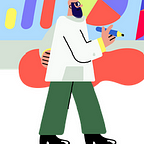The Rise of Midlevels, Should We Be Worried?
After I graduated from my residency last year in internal medicine, I started my job as an internist physician in my hospital of choice. One year into this experience left a sour taste in my mouth, especially regarding the rising level of nonphysician practitioners (or mid-levels) in the sector and the insidious increase in their scope of practice.
While working with midlevel practitioners, I am supposed to be their supervising physician, After all, that is what my long years of medical school and training prepared me to do. History, examination, diagnostics, and planning all need to be run by me one way or another before orders go into the system and directly into medical action to my patients.
But so far, the relationship has been contentious, every encounter seems to be adversarial, a continuous attempt by midlevel practitioners to prove who's smarter, a polite request to run assessments and plans by me is taken in an unwelcoming passive-aggressive manner, “how come a newly-graduated physician is supposed to boss me around” kind of vibe in the air.
This experience has got me thinking, what happened here? where did we go wrong? where did we lose the balance between maintaining a respectful and inviting environment, to pitting healthcare providers against each other? and why does it seem that everywhere I look, it is more Midlevel practitioners than physicians roaming the hallways of the hospitals?
Projections are concerning
Per the Occupational Outlook Handbook from the Bureau of Labor Statistics, the number of physicians in 2019 is 752,400, projected to increase by 4% by 2029 to 779,700. Compared to the number of the projected growth of other healthcare diagnosis or treating practitioners of 10%, physicians' growth looks very underwhelming.
On the other hand, we see an explosion of the projected number of Midlevel practitioners (nursing practitioners, nurse anesthetists, and physician assistants) from 381,700 to a whopping 537,800 at a 41% increase!
National Physician Shortage
The Association of America Medical Colleges (AAMC) attempted to tackle the issue of the physician shortage and it culminated into 100-page research published last year to try to analyze such a complex situation. Be my guest if you want to read the whole dossier but what intrigued me the most was their data regarding the projected national physician shortage as plotted above.
They estimate by 2029, we will have a shortage of physicians ranging from 57,000–118,000, most of which are concentrated in rural areas, especially for primary care.
DID WE OVERCORRECT?
Simple math from the numbers above shows by 2029, we will have around the growth of 27,300 physicians, along with almost 156,200 midlevel practitioners. All competing for possible 57,000–118,000 extra available positions!
A best-case scenario would be needing almost around 120,000 extra healthcare providers, projected supply will oversaturate the market with almost 65,000 providers!
We study for years and train away our youth to achieve our goals of becoming physicians, and be able to treat our patients to the best of our knowledge. At one point in the future, a lot of graduating doctors might not find a place to practice or have to compete with other practitioners to do what they are trained to do.
Something needs to change.
Finally, I'll leave you with this concerning statement written at the job prospects part in the Bureau of Labor Statistics:
Physician assistants (and nursing practitioners) can provide many of the same services as physicians. PAs are expected to continue to have a growing role in providing healthcare services because they can be trained more quickly than physicians…. Physician assistants will have growing roles in all areas of medicine as states expand allowable procedures and autonomy, and as insurance companies expand their coverage of physician assistant services.
Twitter: https://twitter.com/AngryDoc17
